Invented in 1956 by Multitone, radiopaging was first used at Guy’s and St Thomas’ hospitals in London to alert doctors that needed to attend an emergency immediately. Since the early days of simple beepers, paging has evolved dramatically. Today pagers will display a text message of up to 1,000 characters. They can be combined with GSM or IoT technology to create a feedback and communication channel. Encryption and increases in transmission speed have made them even safer and more reliable. The two standards that prevail today are POCSAG and FLEX.
There are two distinct classes of paging service. The first is on-site paging systems that are used in hospitals, prisons, factories and other establishments to convey information across a limited geographical site. The other category is wide-area paging, which provides radio coverage across a whole country or a very wide area such as a state in the US.
However, paging’s advantages have made it a standard for safety-critical and dedicated applications where fast, accurate and reliable messaging communications are mission-critical. To understand why we need to look at the two key components of a paging solution: the network and the pagers themselves.
Paging’s USPs
The days of the pager being a consumer item are over. Many people think paging is old technology but this is not true. It is a proven service and has been developed over the years to be a reliable, sophisticated and resilient communications tool. So what are the reasons behind paging’s enduring appeal?
Firstly, there are the networks. No matter how small or large, POCSAG networks transmit messages from a multitude of base stations (often hundreds) simultaneously and on the same channel. Technically this is known as ‘simulcast’ and provides paging customers with excellent inexpensive coverage throughout the service area. This means that one message can be transmitted over an extremely wide area (typically many thousands of square kilometres) and to many people at the same time. This is referred to as a group message and is just one of the key factors why businesses and emergency organisations continue to use paging today.
Then there are the terminals – modern pagers are highly adapted for the needs of blue light, business and volunteer services, providing:
• Great sensitivity of up to two uV/m without an external antenna
• Battery autonomy of up to 2,500 hours using AA or AAA batteries
• Robust and waterproof according to IP67 • Extremely loud sirens of up to >95 dB(A) at 30 cm
These features make POCSAG and FLEX terminals very easy to wear and operate.
Pagers’ group call functionality is another reason for their continuing popularity. Pagers are each programmed with a number of receiver identity codes (RICs), so when a code that corresponds to the RIC is received the pager will beep and show the received message. At least one RIC will be unique to each pager so that it will respond to its own unique code. However, other RICs can be shared between pagers so that a particular group of devices can have a ‘group RIC’. When the code that corresponds to the group RIC is transmitted the whole group of pagers receive the information. Thus tens, hundreds, or thousands of pagers can be alerted with just one call and one transmission from the base stations. This is a very efficient use of both time and spectrum.
Tragically, since 9/11, there have been many terrorist-related and natural disasters. During these events other networks have been congested. Although calls come into paging networks in a random fashion they are queued and are then transmitted sequentially, so they do not suffer from congestion. It is possible for senior police, military and political leaders to be able to ‘jump’ the queue in emergencies (although this only saves a few seconds). The Critical Messaging Associations of Europe and America recommend that first responders, security services and disaster recovery services should have access to at least two completely separate telecommunications services.
Two-way paging has had a huge impact on pagers’ popularity. It leverages the traditional benefits of paging for outbound and broadcast message delivery while supporting a return channel that carries user acknowledgement, response and location. The ability to directly acknowledge and respond to pager messages is helping many businesses and emergency services re-shape operational processes, improve response times, and make more informed real-time decisions.
Most traditional pagers can operate for six to 13 weeks using AA or AAA batteries, allowing services to be maintained even during prolonged cuts to electrical power.
There are also many other benefits to paging: such as spectrum efficiency, economic coverage, product cost, size, discretion and robustness.
Paging messages
There are three types of paging message. The first is a simple alert where the pager emits a sound. The user then takes a pre-determined action such as contact the office or control room to get instructions, or deal with an emergency (attend a cardiac arrest or launch a lifeboat, for example). This type of message uses a tonepager.
Second is the numeric message, where the pager will beep and display a numeric message. The numeric message pager provides more flexibility than the alert pager if more than one person needs to get hold of you. Messages can be up to 20 digits in length and can represent information other than telephone numbers. Some popular examples would be 925 (finished work), or 1426 0142 representing a grid reference.
The final message type is the word message, where the pager will beep and display a text message of up to 1,000 characters. In this type of message information is conveyed in much the same way as a text message on a mobile phone. This type of message uses a message or an alphanumeric pager.
Almost all of the world’s pagers work on the POCSAG or FLEX codes to convey information and alerts. These are digital codes that are transmitted to send messages to the respective pagers. Because there are only two standards the cost of receiver chips and boards is very low. Two-way paging is now becoming a norm, so these pagers use GSM or other backhaul channels to send acknowledgements and messages back to their controllers.
New products
TPL Systèmes is a French company that specialises in radio communication equipment for emergency services. TPL is one of the biggest suppliers of paging devices and has a very wide range of products that use other technologies: POCSAG, FLEX, TETRA, IoT, 3G, GPRS and GPS.
The Birdy Slim is the company’s latest pager. Thanks to its new radio board it is both a POCSAG receiver and a POCSAG transmitter, providing hospitals and the industrial sector with features including automatic acknowledgement, manual acknowledgement, availability management, SOS message and man-down alerts.
The Birdy Slim is also offered with a POCSAG receiver and IoT transmitter, which provides the same services as the full POCSAG configuration.
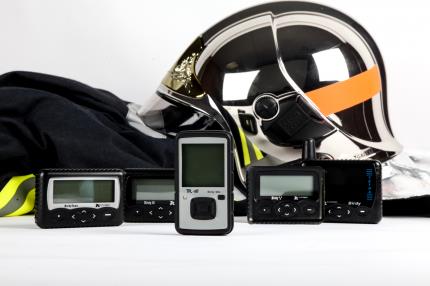
TPL SysteÌ€mes’ suite of pagers
Traditional two-way pagers use a combination of POCSAG and GSM. To be able to send acknowledgements they have to be continuously connected to the GSM network, which comes at a cost and can reduce the battery life. The Birdy Slim solves these problems by using Internet of Things (IoT) networks. IoT devices spend most of the time listening to the networks and rarely transmit, so the devices are alerted by POCSAG and acknowledge back through the IoT network only when necessary. Thanks to this the battery life is considerably extended and costs are reduced.
The Birdy Slim is a rugged IP67-rated pager with excellent sensitivity. It has already been adopted by firefighters, industry customers, hospitals, and the Red Cross in several countries including Austria, France, the Netherlands and Switzerland.
TPL Systèmes is working with the French government to develop a connected ambulance service for 2017, a communicating multi- bearer pager that is linked to chemical bomb detectors for security agents during terrorist activities, and a new concept of antenna exclusively for small products like pagers.
The newest paging network from Swissphone is completely self-reliant with up to five fallback modes. It is completely independent of any IP backbone, giving total redundancy in disaster situations where base station power is cut for prolonged periods. A dedicated paging network can thus remain in service until power is restored.
Swissphone has built more than 300 networks worldwide with a low total cost of ownership compared to other alerting technologies. Swissphone’s base stations provide a mean time between failures of 7.4 years, with many of its historic networks running for 25 years or more without any technical issues. Should a customer want to update an old network, all components of its solution are fully backward-compatible.
Swissphone’s latest ITC5 network generation features up to nine fallback modes. Its base stations can communicate over the air, independent of any IP backhaul or third-party infrastructure – in case of terrorist hacking or other power blackout. An extremely fast throughput minimises the alerting time. Decentralised alarm triggers allow someone to alert the entire network from one location. The individual base stations can be powered by batteries, solar panels or generators, making the network blackout-proof.
Swissphone’s latest s.QUAD pager generation is extremely robust and IP67-rated. Its smart design allows battery autonomy of up to three months with one single AA battery and alerts with a sound of >95 dBA at 30 cm. A Bluetooth Low Energy connection to Android and Apple smartphones allows it to respond back to the control centre, enabling status monitoring and resource management before and after an alert.
Swissphone also offers the RES.Q – a combined POCSAG/GSM terminal for both alerting and workforce management.
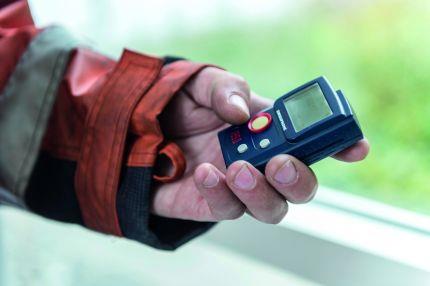
Swissphone’s Res.Q pager
Radio Activity is a relative newcomer to paging and PMR. Founded in 2003, this radio engineering company specialises in designing radio devices and wireless applications, and offers customised solutions to the PMR, DMR and paging markets.
Radio Activity’s KAIROS workstation uses sophisticated software and hardware platforms. It has a LINUX core that naturally interfaces IP devices and networks and allows a high level of customisation. KAIROS can manage the 4FSK modulation (DMR and P25 standard modulation) and the Gaussian minimum shift keying (GMSK) constellation. KAIROS also supports general FSK standards such as POCSAG.
KAIROS offers automatic multi-mode analogue/DMR/POCSAG/P25/SIP/RTP interface, soft diversity reception, 1+1 assembly, WEB server support, and remote control, all in a very small box.
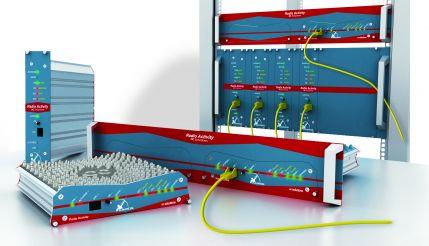
Radio Activity’s KAIROS family of products
The KAIROS suite of equipment satisfies the standards of simulcast transmission required to support paging networks with a minimum number of base stations while providing excellent coverage in the service area. When operating in DMR modulation KAIROS can manage both Tier II and Tier III protocols. All data communication – like GPS positioning, raw data communication (for SCADA or AVM applications), text messaging, alarm notifications – are available at a specific IP port. KAIROS can also run Tier III Controller tasks on its internal LINUX core with no additional external devices. Multitone Electronics installed the world’s first radiopaging system in St Thomas’ Hospital, London in 1956 and it continues to innovate in the field of mission-critical messaging, using a hybrid blend of radio technologies and devices to provide the right device for individuals depending on their requirements. More than 65 per cent of NHS hospitals use Multitone’s equipment to deliver their critical messaging needs, as well as monitoring alarm systems such as fire alarms, nurse call, building management and gas alarms. Multitone also provides more than 85 per cent of the UK’s fire and rescue services with their callout systems.
GSM, 4G, ISM and Bluetooth can all be used to augment radiopaging to provide both call acknowledgement and two-way messaging from various devices. Utilising the Multitone iMessage unified communication platform to integrate alarms and messaging means users can choose the device(s) that suits their needs best, including radio pagers, DMR handsets, TETRA radios, Wi-Fi handsets, DECT phones or smartphones. iMessage provides a full audit trail of delivery and read receipts as well as being able to supply media-rich content over an end to end secure encrypted link. iMessage allows teams and users to communicate efficiently over a range of devices with a single point of contact irrespective of what device staff are carrying.
New services provided by operators
PageOne is a London-based messaging solutions company that provides tailored and integrated messaging and communications services across paging, SMS, email and voice. It also operates one of the largest national public paging networks in the UK.
The firm has pioneered the development of two-way paging services. None have benefited more from the advent of two-way paging than the UK fire authorities; who are traditionally a key market for paging with a mix of private on-site paging systems and public wide-area paging services.
PageOne has developed its core messaging platform and services specifically to take advantage of the capabilities of the Responder pager manufactured by Swissphone, which integrates a paging receiver with a GSM device in a pager-sized body.
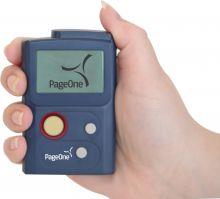
It has developed and implemented a GSM fallback capability for its messaging platform. This ensures that if a pager is outside the paging network coverage then messages are also transmitted via GSM networks, using either the SMS or GPRS data channels, improving message delivery and resilience, and ensuring that customers, and especially the emergency services, are not reliant on only one communications network.
Delivery confirmation, user responses and optional GPS location received from the Responder pager are processed by PageOne’s core messaging platform and made available both via PageOne Connect, a secure web-based messaging suite and via software integration. PageOne’s support for a rich suite of software APIs also allows integration with third-party software systems such as control room dispatch systems and staff/resource management systems. The ability of such systems to directly initiate paging alerts and receive responses and GPS location information ensures updates and information can be used in real time to allow better decisions to be made.
PageOne has worked closely with the UK Cabinet Office to ensure that PageOne Responder pagers have MTPAS-enabled SIM cards so that even if the mobile network MTPAS restrictions are implemented (usually in the event of a disaster or terrorist attack), two-way paging services will still be operational in the UK. Using PageOne’s Responder two- way pager volunteer firefighters can confirm their attendance immediately, giving the control room much quicker confirmation of mobilisation or the ability to alert another team and improve response times.
Retained firefighters can remotely book on/off by updating their status availability in real time via the pager. PageOne’s messaging gateway is integrated with common resource management systems so that book on/off updates are immediately reflected within the control room.
In Belgium and the Netherlands paging is used to supplement TETRA networks and to alert volunteer firefighters. Other users of the system include the Civil Protection Service, several medical emergency services, doctors, hospitals and the Red Cross. The system allows for sending an alarm message simultaneously to a large number of volunteers who possess a pager and are located outside the station (at work or at home).
Recently Belgium’s ASTRID completed the changeover from its old paging system to a new one. After consultation with the users it decided to re-opt for POCSAG, which continues to meet the operational needs of the emergency services. The preparations for renovating the infrastructure and ensuring continuity of service provision in the future took about a year. ASTRID worked closely together with the user organisations throughout the entire process.
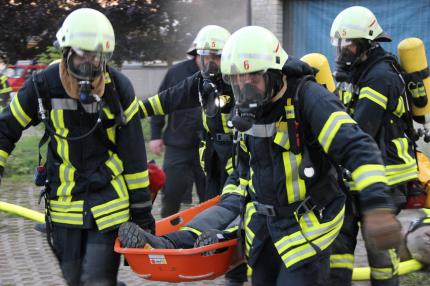
Pagers are used to co-ordinate and alert volunteer firefighters in Belgium and the Netherlands
During the changeover on 4 June 2016 ASTRID constantly kept users informed about the course of events. The migration was completed in four hours (between 8am and noon), during which time the paging service was interrupted. Following several months of preparation, the technical teams from ASTRID and its suppliers did their utmost to ensure a smooth transition.
After the switchover of the 226 antennas in various locations all over the country, the pagers of volunteer firefighters and emergency responders as well as the alarm terminals at fire stations automatically connected to the new system. More than 2.3 million pages pass through the paging network every year. Radio communication was not interrupted during the switchover operation as it did not involve the ASTRID TETRA network.
The renewal of the paging system included the replacement of the network core and its auxiliary support systems (comprising three data centres) the gradual replacement of the base stations, and the addition of certain features with added value for the users. The Netherlands is also replacing its emergency service paging network.
Conclusion
Paging is 60 years old this year, but nowadays it is not simply ‘good old paging’. It is advanced two- way data communications that are inexpensive, coverage is excellent and easily extended (it is specified to work within cellars in Belgium), it is fast, it is super reliable and the products last a long time. It has group call; whereby a few or a few thousand people can be alerted simultaneously, it can also be used as a population-alerting device whereby those in a small local area or millions of people could be alerted.
Product makers have developed and evolved their portfolios to include other mobile and fixed technologies so that new services and/or coverage can be easily achieved and messages can be sent to any number of devices using quite separate technologies. There is even a two-way system that will run for many days during a total cut in power, enabling emergency services and recovery staff to remain in full contact.
The paging operators have redesigned themselves to introduce new products and services to their customers, be it a weather station or a fully integrated messaging system that allows its customers to use almost any device – pagers, GSM, TETRA, email, and so on. They have even integrated solutions into the customer’s own control rooms.
What other mobile technology offers all of the above to its customers?



